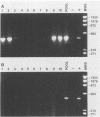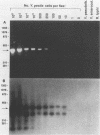Abstract
Yersinia pestis, the plague bacillus, infects a variety of mammals throughout the world and is transmitted by fleas. We developed a polymerase chain reaction (PCR) test using primers designed from the Y. pestis plasminogen activator gene to directly detect plague-infected fleas. As few as 10 Y. pestis cells were detected, even in the presence of flea tissue, by PCR and then agarose gel electrophoresis and ethidium bromide staining. The feasibility of the assay was demonstrated by using naturally infected Xenopsylla cheopis fleas. The detection of Y. pestis in fleas by PCR provides a rapid and sensitive way to monitor plaque in wild animal populations, allowing public health officials to better assess the potential risk of transmission to humans.
Full text
PDF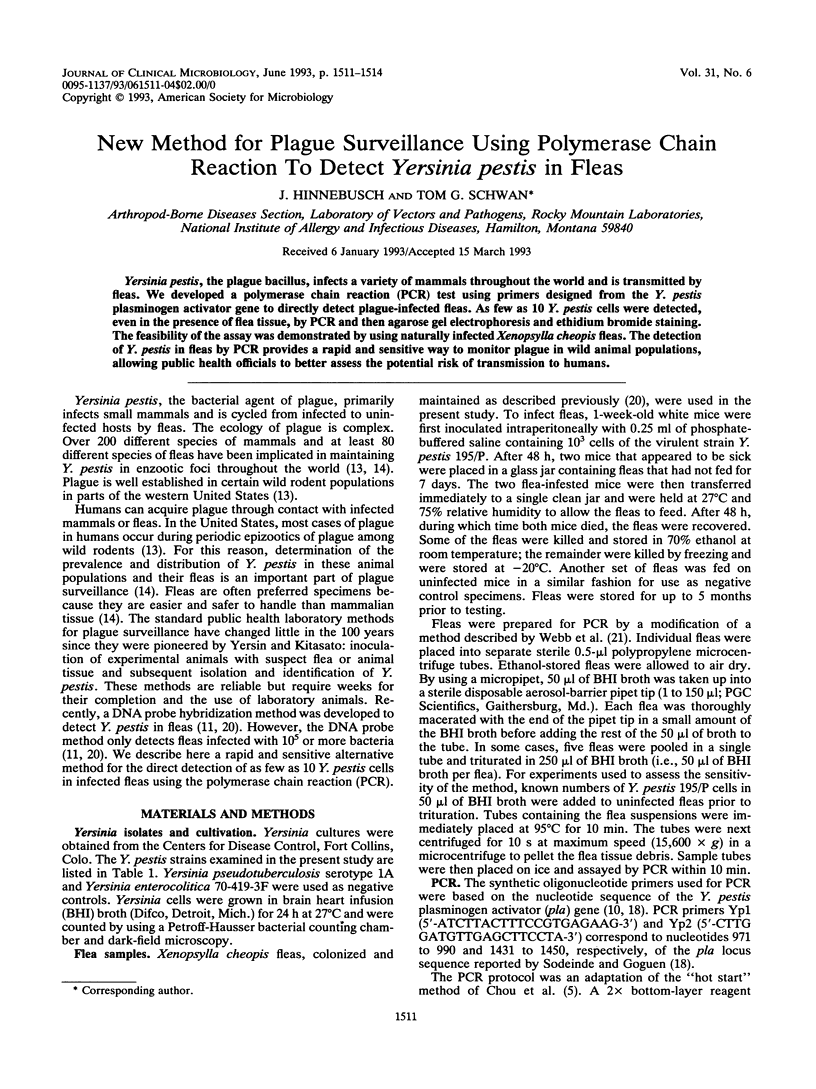
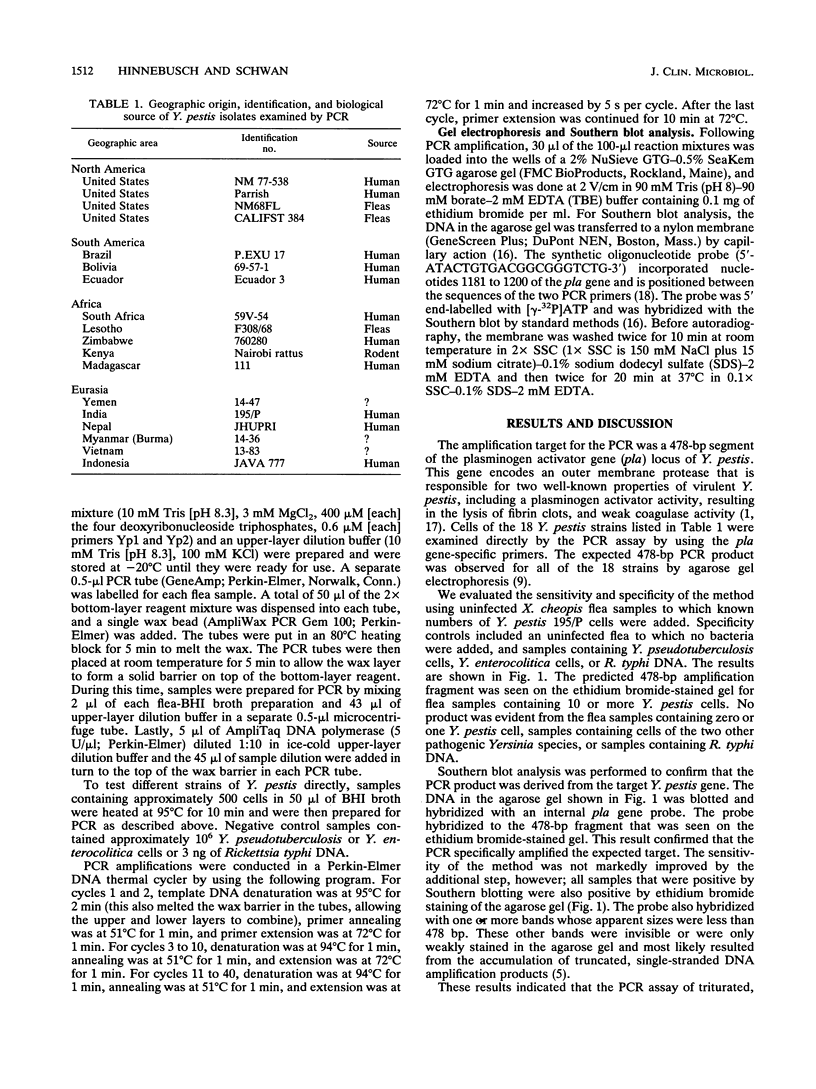
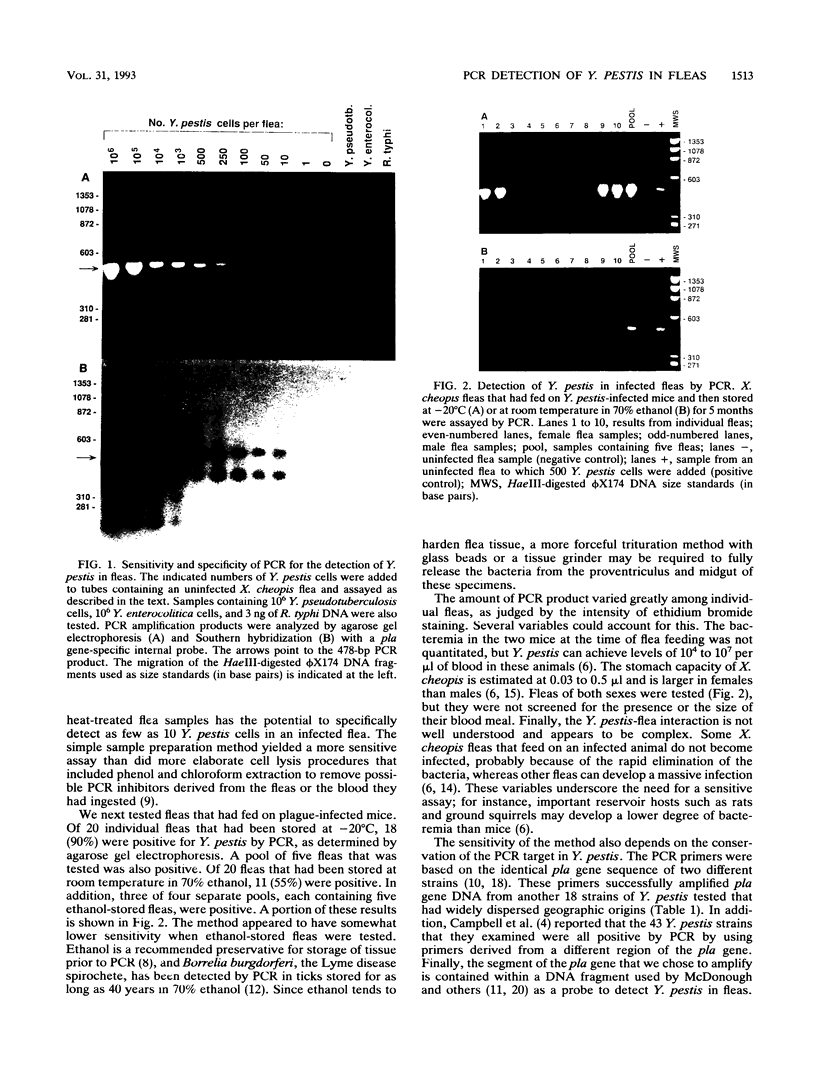
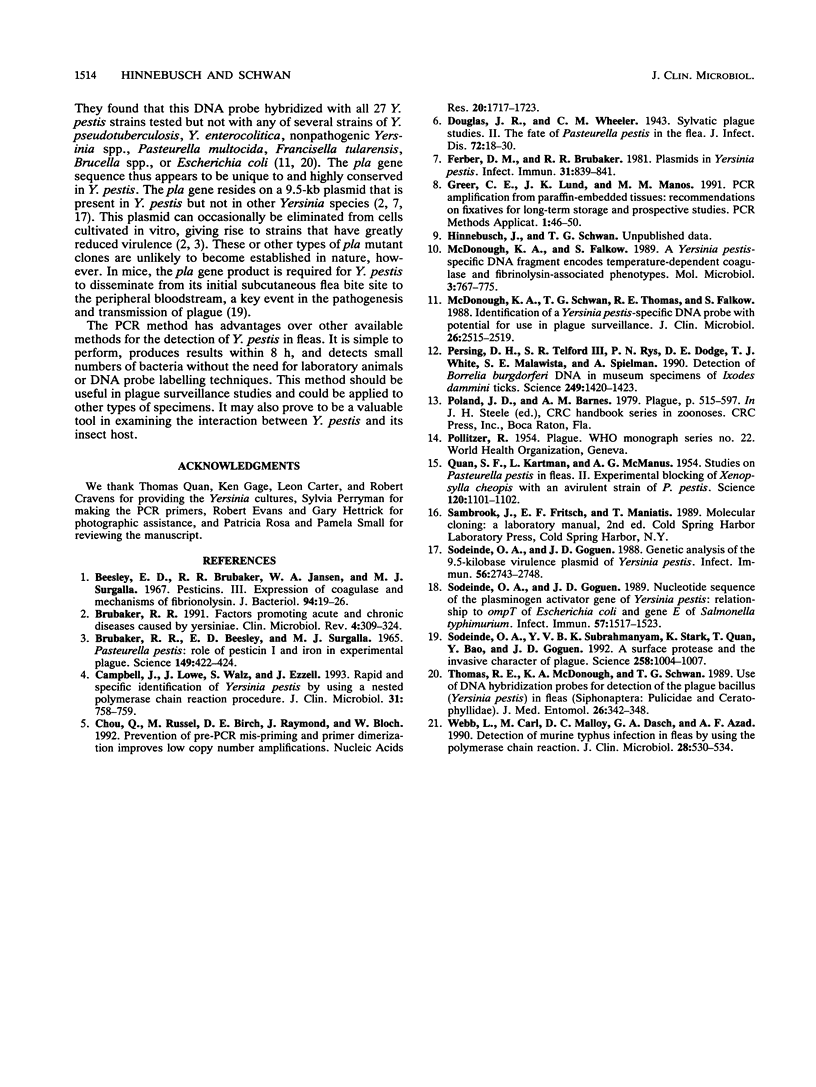
Images in this article
Selected References
These references are in PubMed. This may not be the complete list of references from this article.
- Beesley E. D., Brubaker R. R., Janssen W. A., Surgalla M. J. Pesticins. 3. Expression of coagulase and mechanism of fibrinolysis. J Bacteriol. 1967 Jul;94(1):19–26. doi: 10.1128/jb.94.1.19-26.1967. [DOI] [PMC free article] [PubMed] [Google Scholar]
- Brubaker R. R., Beesley E. D., Surgalla M. J. Pasteurella pestis: Role of Pesticin I and Iron in Experimental Plague. Science. 1965 Jul 23;149(3682):422–424. doi: 10.1126/science.149.3682.422. [DOI] [PubMed] [Google Scholar]
- Brubaker R. R. Factors promoting acute and chronic diseases caused by yersiniae. Clin Microbiol Rev. 1991 Jul;4(3):309–324. doi: 10.1128/cmr.4.3.309. [DOI] [PMC free article] [PubMed] [Google Scholar]
- Campbell J., Lowe J., Walz S., Ezzell J. Rapid and specific identification of Yersinia pestis by using a nested polymerase chain reaction procedure. J Clin Microbiol. 1993 Mar;31(3):758–759. doi: 10.1128/jcm.31.3.758-759.1993. [DOI] [PMC free article] [PubMed] [Google Scholar]
- Chou Q., Russell M., Birch D. E., Raymond J., Bloch W. Prevention of pre-PCR mis-priming and primer dimerization improves low-copy-number amplifications. Nucleic Acids Res. 1992 Apr 11;20(7):1717–1723. doi: 10.1093/nar/20.7.1717. [DOI] [PMC free article] [PubMed] [Google Scholar]
- Ferber D. M., Brubaker R. R. Plasmids in Yersinia pestis. Infect Immun. 1981 Feb;31(2):839–841. doi: 10.1128/iai.31.2.839-841.1981. [DOI] [PMC free article] [PubMed] [Google Scholar]
- Greer C. E., Lund J. K., Manos M. M. PCR amplification from paraffin-embedded tissues: recommendations on fixatives for long-term storage and prospective studies. PCR Methods Appl. 1991 Aug;1(1):46–50. doi: 10.1101/gr.1.1.46. [DOI] [PubMed] [Google Scholar]
- McDonough K. A., Falkow S. A Yersinia pestis-specific DNA fragment encodes temperature-dependent coagulase and fibrinolysin-associated phenotypes. Mol Microbiol. 1989 Jun;3(6):767–775. doi: 10.1111/j.1365-2958.1989.tb00225.x. [DOI] [PubMed] [Google Scholar]
- McDonough K. A., Schwan T. G., Thomas R. E., Falkow S. Identification of a Yersinia pestis-specific DNA probe with potential for use in plague surveillance. J Clin Microbiol. 1988 Dec;26(12):2515–2519. doi: 10.1128/jcm.26.12.2515-2519.1988. [DOI] [PMC free article] [PubMed] [Google Scholar]
- Persing D. H., Telford S. R., 3rd, Rys P. N., Dodge D. E., White T. J., Malawista S. E., Spielman A. Detection of Borrelia burgdorferi DNA in museum specimens of Ixodes dammini ticks. Science. 1990 Sep 21;249(4975):1420–1423. doi: 10.1126/science.2402635. [DOI] [PubMed] [Google Scholar]
- QUAN S. F., KARTMAN L., McMANUS A. G. Studies on Pasteurella pestis in fleas. II. Experimental blocking of Xenopsylla cheopis with an avirulent strain of P. pestis. Science. 1954 Dec 31;120(3131):1101–1102. doi: 10.1126/science.120.3131.1101. [DOI] [PubMed] [Google Scholar]
- Sodeinde O. A., Goguen J. D. Genetic analysis of the 9.5-kilobase virulence plasmid of Yersinia pestis. Infect Immun. 1988 Oct;56(10):2743–2748. doi: 10.1128/iai.56.10.2743-2748.1988. [DOI] [PMC free article] [PubMed] [Google Scholar]
- Sodeinde O. A., Goguen J. D. Nucleotide sequence of the plasminogen activator gene of Yersinia pestis: relationship to ompT of Escherichia coli and gene E of Salmonella typhimurium. Infect Immun. 1989 May;57(5):1517–1523. doi: 10.1128/iai.57.5.1517-1523.1989. [DOI] [PMC free article] [PubMed] [Google Scholar]
- Sodeinde O. A., Subrahmanyam Y. V., Stark K., Quan T., Bao Y., Goguen J. D. A surface protease and the invasive character of plague. Science. 1992 Nov 6;258(5084):1004–1007. doi: 10.1126/science.1439793. [DOI] [PubMed] [Google Scholar]
- Thomas R. E., McDonough K. A., Schwan T. G. Use of DNA hybridizations probes for detection of the plague bacillus (Yersinia pestis) in fleas (Siphonaptera: Pulicidae and Ceratophyllidae). J Med Entomol. 1989 Jul;26(4):342–348. doi: 10.1093/jmedent/26.4.342. [DOI] [PubMed] [Google Scholar]
- Webb L., Carl M., Malloy D. C., Dasch G. A., Azad A. F. Detection of murine typhus infection in fleas by using the polymerase chain reaction. J Clin Microbiol. 1990 Mar;28(3):530–534. doi: 10.1128/jcm.28.3.530-534.1990. [DOI] [PMC free article] [PubMed] [Google Scholar]



